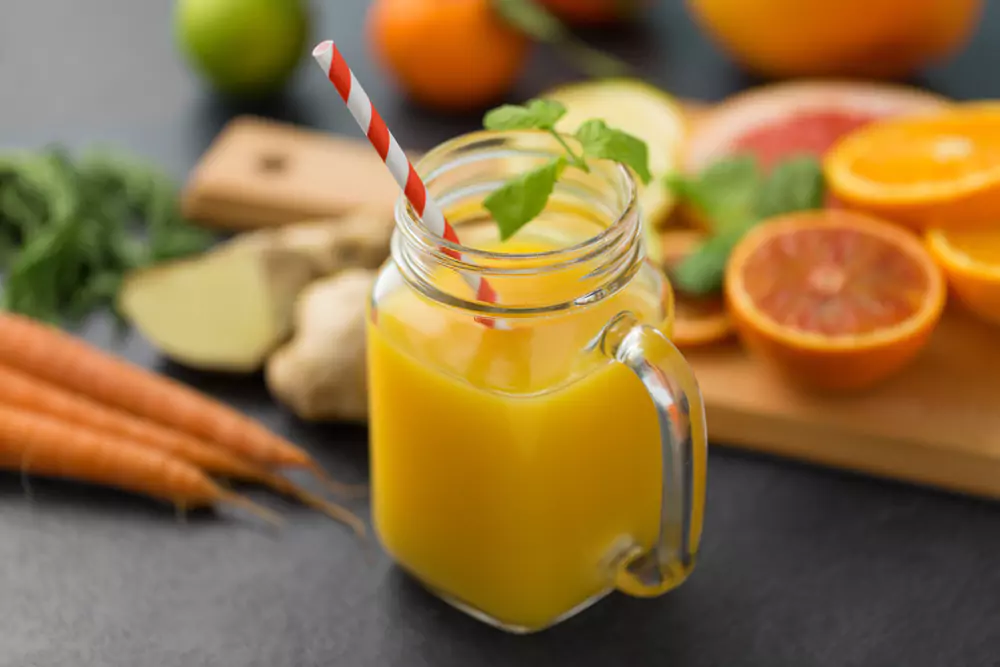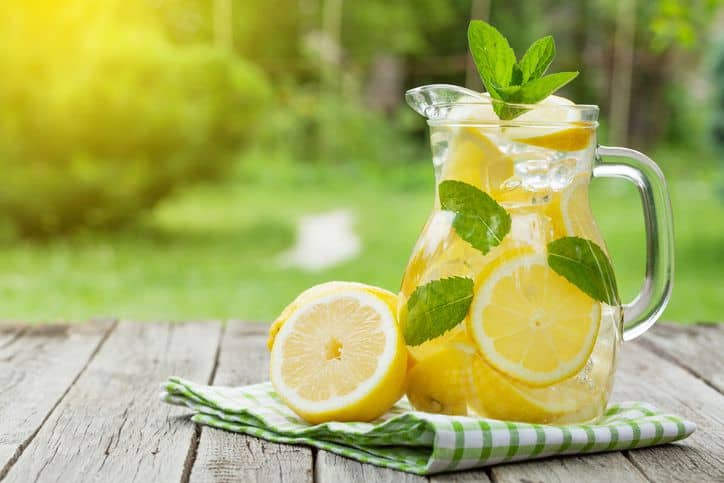In today’s fast-paced world, the importance of maintaining the freshness and nutritional value of our fruits and vegetables cannot be overstated. Juice storage plays a crucial role in ensuring that we can enjoy the benefits of these healthy beverages for as long as possible.
One of the primary concerns when storing juice is maintaining its nutritional content and taste. Oxidation, exposure to air, and bacterial growth can all lead to a decline in the juice’s quality over time. Furthermore, many people struggle with finding the right storage method and container to prevent spoilage and waste.
To address these challenges, we have compiled a list of essential tips and strategies to help you maximize the storage life of your juice while preserving its nutritional value and taste.
In this article, I will explore the best practices and innovative techniques for preserving the freshness of your juice, while also addressing common challenges and offering practical solutions.
What’s The Difference Between Store-Bought Juice And Fresh Squeezed?
Before I walk you through some important ways to juice bottle storage, let me explain the key differences between store-bought juice and fresh-squeezed juice.
Nutritional Content
When it comes to nutritional content, there is a significant difference between store-bought juice and fresh-squeezed juice. Store-bought juices often undergo pasteurization and may contain added sugars, preservatives, and artificial flavors. This process can lead to a reduction in the overall nutritional value of the juice. On the other hand, fresh-squeezed juice retains more of its natural vitamins, minerals, and enzymes, providing a higher nutritional content.
Flavor
The flavor of store-bought juice can be affected by the pasteurization process and the addition of preservatives and artificial flavors. This can result in a less vibrant and fresh taste compared to fresh-squeezed juice. Fresh-squeezed juice tends to have a more intense and natural flavor due to its lack of processing and additives.
Freshness
Freshness is a crucial factor when comparing store-bought juice to fresh-squeezed juice. Store-bought juices often have a longer shelf life due to the addition of preservatives and the pasteurization process. In contrast, fresh-squeezed juice has a shorter shelf life as it does not contain preservatives and is best consumed shortly after being squeezed to maintain its freshness.
Cost
In terms of cost, store-bought juices are generally more affordable than fresh-squeezed juices. The convenience and longer shelf life of store-bought juices contribute to their lower cost compared to the labor-intensive process of squeezing fresh juice.
How To Store Juice In Mason Jars?
First of all, mason jars are a great option for storing juice as they are airtight and can help preserve the freshness of the juice for a longer period of time. When storing juice in mason jars, it’s important to follow a few key steps to ensure that the juice remains fresh and safe to consume.
Here are the step by step instructions for storing juice in mason jars.
Choosing the Right Mason Jars

When storing juice in mason jars, it’s essential to use jars that are specifically designed for canning and preserving. Regular glass jars may not be suitable for long-term storage of juice. Look for mason jars with a two-piece lid system, including a flat metal lid with a sealing compound and a screw band to secure the lid in place.
Preparing the Jars
Before filling the mason jars with juice, it’s crucial to wash them thoroughly with hot, soapy water and rinse them well. Ensure that the jars are completely dry before use to prevent any moisture from affecting the quality of the juice.
Filling the Jars
When filling the mason jars with juice, leave some headspace at the top to allow for expansion during freezing or canning. This headspace helps prevent the jars from breaking as the liquid expands. Use a funnel to pour the juice into the jars, minimizing spills and keeping the jar rims clean.
Sealing the Jars
After filling the jars with juice, wipe the rims clean with a damp cloth to remove any residue that could prevent a proper seal. Place the flat metal lids on top of the jars and secure them in place with the screw bands. It’s important not to overtighten the screw bands as this can interfere with the sealing process.
Storing the Jars
Once filled and sealed, store the mason jars of juice in a cool, dark place away from direct sunlight. If you plan to store the juice for an extended period, consider refrigerating or freezing it to maintain its freshness. Proper following the juice storage container conditions are essential for preserving the flavor and quality of the juice.
Checking for Seals
After storing the juice in mason jars, it’s important to check for proper seals. Press down on the center of each lid – if it doesn’t move or make a popping sound, the jar is sealed correctly. Any unsealed jars should be refrigerated and consumed promptly.
Labeling and Dating
To keep track of when the juice was stored, label each jar with its contents and date of preservation using adhesive labels or permanent markers. This helps you identify older batches of juice and ensures that you consume them within their recommended storage time frame.
How To Use Hermetic Jars To Store Juice?
Other than the juice storage machine, using hermetic jars are another excellent option for storing juice due to their airtight seal, which helps preserve the freshness and flavor of the juice for a longer period. Here’s a step-by-step guide on how to use hermetic jars to store juice:

Choose the Right Hermetic Jar
Opt for a jar with a wide mouth and a sturdy seal. The size of the jar should be appropriate for the amount of juice you plan to store.
Clean the Jar and Lid Thoroughly
Wash the jar and lid with warm, soapy water. Rinse them well and let them air dry or wipe them down with a clean, lint-free cloth.
Prepare the Juice
If you’re storing homemade juice, strain it through a fine mesh sieve or cheesecloth to remove any pulp or sediment. If you’re storing store-bought juice, ensure that it is stored at room temperature before transferring it to the jar.
Fill the Jar
Pour the juice into the jar, leaving about an inch of headspace at the top. This allows for expansion during storage and makes it easier to seal the jar properly.
Seal the Jar
Place the lid on the jar and tighten it securely. It should be snug, but not too tight, as this can cause the lid to warp over time.
Store the Juice
Store the hermetic jars in a cool, dark place, such as a pantry or cupboard. Avoid storing them near appliances that generate heat or direct sunlight, as this can degrade the quality of the juice over time.
Check the Seal Regularly
Periodically check the seal on the jar by gently pressing on the lid. If it’s not secure, tighten it again. If you notice any bulging or leaking, discard the juice immediately.
Consume the Juice Within a Reasonable Timeframe
While hermetic jars can help preserve juice for a longer period, it’s still best to consume it within a few weeks to a few months, depending on the type of juice and juice bar storage conditions.
Using Glass Bottles To Store Juice
Do you know that using glass bottles other than the liquid storage jars to store juice can be a more sustainable and eco-friendly option? Here’s how you can do it step-by-step:

Clean and sanitize the glass bottles
Before using glass bottles to store juice, make sure to thoroughly clean and sanitize them. This will prevent any contamination and ensure the juice stays fresh for a longer period.
Choose the right type of juice
Opt for 100% natural fruit or vegetable juice, as they are more likely to be fresh and have a better taste when stored in glass bottles.
Prepare the juice
Freshly squeezed juices are the best option, but you can also purchase high-quality, fresh juice from local stores or farmers’ markets.
Fill the glass bottles
Carefully fill the glass bottles with the juice, leaving some space at the top to avoid spills and to allow for expansion if the juice is refrigerated.
Seal the bottles
Use airtight glass bottle caps or lids to seal the bottles, ensuring that they are tight enough to prevent any leakage or spills.
Label the bottles
For easy identification and storage, label each glass bottle with the type of juice it contains and the date it was filled.
Store the juice
Keep the glass bottles of juice refrigerated to maintain freshness and prevent spoilage. You can also store them in a cool, dark place, but it’s best to consume the juice within a week to ensure optimal freshness.
Reuse the glass bottles
After finishing the juice, clean and sanitize the glass bottles again for reuse. This not only helps reduce waste but also saves money in the long run.
How To Store Juice Using Glass Pitchers?
Other than juice-storage jug, know that using glass pitchers is another best way to store juice. Glass pitchers are not only environmentally friendly but also help in preserving the flavor and freshness of the juice.

Here’s how I store juice using glass pitchers:
Choosing the Right Glass Pitcher
- Select a glass pitcher with a tight-fitting lid to ensure a proper seal and prevent oxidation.
- Ensure the pitcher is made of high-quality, lead-free glass to maintain the purity of the juice.
Preparing the Glass Pitcher
- Wash the glass pitcher with warm, soapy water and rinse it thoroughly to remove any residue or odors.
- Sterilize the pitcher by pouring boiling water into it and allowing it to sit for a few minutes before pouring out the water.
Filling the Glass Pitcher
- Use freshly squeezed juice or store-bought juice without any added sugar or preservatives for best results.
- Carefully pour the juice into the glass pitcher, leaving some space at the top to avoid spillage when placing the lid.
Storing the Glass Pitcher
- Place the lid securely on the pitcher to create an airtight seal, which helps preserve the freshness of the juice.
- Store the glass pitcher in the refrigerator to maintain the optimal juice storage temperature and slow down deterioration.
Maintaining Freshness
- Consume the juice within 3 to 4 days for maximum freshness and flavor.
- If there is leftover juice, transfer it to a smaller glass container to minimize air exposure.
Cleaning and Reusing
- After emptying the pitcher, wash it promptly with warm, soapy water and dry it thoroughly before reuse.
- Avoid using abrasive materials that may scratch or damage the glass surface.
Storing Juice In Stainless Steel Jugs & Tumblers
Have you ever considered using stainless steel jugs and tumblers to store juice? I have found that using stainless steel containers for storing juice has several benefits, including maintaining the freshness of the juice and being easy to clean.

Here are the steps I follow when storing juice in stainless steel jugs and tumblers:
Selecting the Right Stainless Steel Container
When choosing a stainless steel jug or tumbler for storing juice, it’s important to ensure that it is made of high-quality food-grade stainless steel. Look for containers that are specifically designed for storing beverages and have a tight-sealing lid to prevent air exposure.
Preparing the Container
Before using the stainless steel jug or tumbler, I make sure to wash it thoroughly with warm soapy water and rinse it well to remove any manufacturing residues. This step is crucial to ensure that the container is clean and ready for storing juice.
Juice Preparation
I prepare the juice by using fresh fruits or vegetables and extracting the juice using a juicer. It’s important to use freshly prepared juice for optimal taste and nutritional benefits.
Filling the Container
Once the juice is ready, I carefully pour it into the clean stainless steel jug or tumbler, leaving some space at the top to allow for expansion if I plan to store it in the freezer.
Sealing the Container
After filling the container with juice, I securely seal the lid to minimize air exposure. This helps preserve the freshness of the juice and prevents oxidation, which can affect its taste and nutritional quality.
Storing the Juice
Depending on my preference, I either store the filled stainless steel container in the refrigerator or freezer. Stainless steel is known for its ability to retain cold temperatures, making it suitable for keeping juice chilled in the refrigerator or even frozen for longer-term storage.
Cleaning and Maintenance
After enjoying the juice, I promptly clean the stainless steel jug or tumbler with warm soapy water and a non-abrasive sponge. This ensures that any residue or odors are removed, keeping the container ready for future use.
Why Are Plastic Containers Not Suggested?
I avoid using juice storage plastic bottles for storing juice because, over time, the chemicals in the plastic can leach into the drink. Once, I stored orange juice in a plastic bottle, and it ended up tasting a bit off. I did some research and found out that certain substances in plastic can mix with the juice, affecting its flavor and potentially posing health risks. Now, I stick to glass or stainless steel containers to keep my juice fresh and free from any unwanted plastic flavor.
Is Type Of Juicer Affected by storing Juice?
Yes !The type of juicer does impact how long juice stays fresh. I once used a centrifugal juicer, and the juice didn’t last as long before it started tasting different. Later, I switched to a masticating juicer, and the juice stayed fresher for a longer time. The slower juicing process helped preserve more nutrients and minimized oxidation, making the juice taste better and last longer in the fridge.
Tips For Increasing Cold Press Juice’s Shelf Life
Now that you have an idea about different ways to store juice, let’s discuss how you can increase the shelf life of your cold press juice.
Put Juice In Airtight, Glass Containers
Storing your cold press juice in airtight, glass containers is essential to prevent oxidation and preserve nutrients. Glass containers are also free from chemicals and toxins that can contaminate the juice. Make sure to clean the containers thoroughly before use
Store Fresh Juice Right Away After Squeezing
The sooner you store your cold press juice, the longer it will last. Ideally, you should store it within 10-15 minutes of juicing to maintain its freshness.
Add A Piece Of Citrus Fruit To Your Juice
Adding a small piece of citrus fruit, such as lemon or lime, to your juice can help prevent oxidation and extend its shelf life. The citric acid acts as a natural preservative, keeping the juice fresh for a longer period.
Labeling And Storage
Proper labeling is important for identifying the contents of your containers and their shelf life. Make sure to label the juice with the date it was made, the type of juice, and any additional ingredients or preservatives added. Store the juice in a cool, dark place away from direct sunlight or heat sources.
Drink Your It Within 72 Hours (3 Days)
Cold press juice is best consumed within 72 hours of making it to ensure maximum nutrient retention and freshness. After that, the juice will start to lose its nutritional value and taste.
How Long Can You Store Your Juice?
Do you know that the shelf life of juice can vary depending on the type of juice and how it’s stored? For example, freshly squeezed juice can be stored in the refrigerator for up to 2-3 days, while commercially processed and sealed juices can last for several weeks.
However, it’s important to always check the expiration date on the packaging and follow any specific juice cold storage instructions provided. Additionally, freezing juice can extend its shelf life to several months, but it may affect the taste and quality. It’s best to consume juice as soon as possible for the freshest taste and maximum nutritional benefits.
What Happens To Juice That’s Too Old?
As a juice enthusiast, I have come across situations where juice has been left sitting on the shelf for too long. In such cases, it is essential to understand what happens to juice when it becomes too old.
When juice is exposed to air for an extended period, it undergoes various chemical and physical changes. The most noticeable change is the deterioration of taste and aroma. This is primarily due to the oxidation of the juice’s natural components, such as vitamins, minerals, and antioxidants. As a result, the once-fresh and vibrant taste becomes dull, flat, and less appealing.
In addition to the decline in taste, old juice may also develop off-flavors and off-odors. These can be attributed to the growth of bacteria and yeast, which thrive in an environment with high sugar content and low acidity. The presence of these microorganisms can lead to the production of acids, alcohol, and other compounds that further alter the juice’s taste and smell.
Moreover, the nutritional content of old juice is significantly reduced. Over time, essential vitamins and minerals are lost due to exposure to air, light, and heat. This can result in a lower concentration of vital nutrients, such as vitamin C, which is known to decline rapidly when exposed to oxygen.

How Long Does Cold Pressed Juice Last In The Freezer?
In terms of juicing stored in the fridge, cold press juice can last for an extended period, depending on the specific juice and the conditions under which it is stored. Generally, cold pressed juice can last for about 6 months when kept in a freezer at a consistent temperature. However, it is essential to note that the quality of the juice may degrade over time, and the taste and nutritional value may change.
How Long Does Cold Pressed Juice Last Unrefrigerated?
In my personal experience, other than storing juice in the freezer, cold-pressed juice can last for about 4-6 hours unrefrigerated. However, this can vary depending on factors such as the temperature of the environment and whether the juice has been exposed to sunlight.
It’s important to consume cold-pressed juice as soon as possible for the best taste and nutritional benefits. If you’re unsure about the safety of unrefrigerated juice, it’s best to err on the side of caution and refrigerate it promptly.
What To Look For When Juice Spoils?
Do you know what to look for when juice spoils? It’s essential to be aware of the signs of spoilage to ensure you’re consuming fresh and safe juice. Here’s what you should look for:
Appearance
The first thing to check is the color and clarity of the juice. If it appears cloudy, discolored, or has floating particles, it might be spoiled. Fresh juice should be clear and vibrant in color.
Odor
A foul or off-putting smell is another indicator of spoilage. Fresh juice should have a pleasant, fruity aroma. If you notice any unusual or unpleasant odors, it’s best to discard the juice.
Taste
Spoiled juice may have a sour, off, or bitter taste. Fresh juice should taste sweet and refreshing. If you detect any off-flavors, it’s likely that the juice has spoiled.
Expiration date
Always check the expiration date on the juice bottle. If it has passed its expiration date, there’s a higher risk of spoilage. Stick to juices with a more extended shelf life to minimize the risk of consuming spoiled juice.
Storage conditions
Improper storage can lead to spoilage. Make sure to store your juice in a cool, dark place, and keep it refrigerated once opened.
Liquid Storage And Handling Guidelines
Last but not least, let’s discuss three juice box storage and handling guidelines. As someone with personal experience in the field, I can share some important tips that have helped me in my career.
Proper Containment
The first guideline is to store liquids in appropriate containers. This is crucial to prevent leaks, spills, and contamination. Using the right container ensures the liquid is safely contained and prevents any harm to the environment or workers.
Labeling and Identification
Another important guideline is to label all liquid containers clearly and accurately. This helps in identifying the contents of the container and ensures that the right liquid is used in the appropriate processes. Proper labeling also reduces the risk of accidents and mix-ups.
Temperature Control
Temperature control is vital for the safe storage and handling of liquids. Different liquids have different storage temperatures, and maintaining the right temperature is essential to prevent spoilage, chemical reactions, or even explosions. Monitoring and controlling the temperature helps in maintaining the quality and stability of the liquid.
Conclusion
In conclusion, proper beverage preservation is essential for maintaining optimal freshness and convenience. By following the guidelines outlined in this comprehensive guide, individuals can ensure that their juices retain their nutritional value and taste for an extended period. From selecting the right containers to utilizing appropriate refrigeration techniques, these practices contribute to a more sustainable and enjoyable juice consumption experience.
FAQs
How To Store Homemade Juice?
Store homemade juice in airtight glass containers in the coldest part of the fridge to maintain freshness for about 2-3 days.
How To Freeze Fresh Juice?
Freeze fresh juice by pouring it into freezer-safe containers, leaving some space for expansion, and it can last for several months.
How Long Does Fresh Juice Last In Fridge?
Fresh juice typically lasts about 2-3 days in the fridge; consider factors like storage conditions and the type of juice.
What Are Best Containers To Store Fresh Juice?
Use glass or stainless steel containers to store fresh juice, as they prevent unwanted flavors and maintain the quality of the juice for a longer time.

Kristen Hamm
Kristen Hamm is a highly accomplished dietitian expert with a deep passion for promoting healthy eating habits and improving people’s overall well-being.






